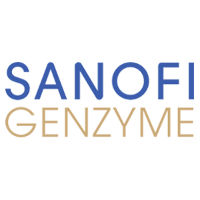预约演示
更新于:2025-05-07

Sanofi (China) Investment Co. Ltd.
更新于:2025-05-07
概览
标签
其他疾病
免疫系统疾病
遗传病与畸形
小分子化药
单克隆抗体
酶
疾病领域得分
一眼洞穿机构专注的疾病领域
暂无数据
技术平台
公司药物应用最多的技术
暂无数据
靶点
公司最常开发的靶点
暂无数据
| 排名前五的药物类型 | 数量 |
|---|---|
| 单克隆抗体 | 7 |
| 小分子化药 | 7 |
| 酶 | 1 |
| siRNA | 1 |
| 重组凝血因子 | 1 |
关联
35
项与 赛诺菲(中国)投资有限公司 相关的药物靶点 |
作用机制 AT III抑制剂 |
在研机构 |
非在研适应症- |
最高研发阶段批准上市 |
首次获批国家/地区 美国 |
首次获批日期2025-03-28 |
靶点 |
作用机制 F10刺激剂 |
在研机构 |
原研机构 |
非在研适应症- |
最高研发阶段批准上市 |
首次获批国家/地区 美国 |
首次获批日期2023-02-22 |
91
项与 赛诺菲(中国)投资有限公司 相关的临床试验CTR20242991
一项在双肺移植后慢性移植肺功能丧失(CLAD)成人受试者中评价口服贝舒地尔的有效性的随机、双盲、安慰剂对照、平行分组、Ⅲ 期研究,继以开放性延长研究
主要目的:证明在双肺移植后患有 1 期或 2 期 CLAD 的受试者中,贝舒地尔与安慰剂相比,通过 1 秒用力呼气容积(FEV1)测量的针对肺功能的有效性 次要目的:证明在双肺移植后患有 CLAD 的受试者中,贝舒地尔与安慰剂相比,通过 FEV1 测量的针对肺功能的有效性;通过测量用力肺活量(FVC),评估贝舒地尔对肺功能的有效性;通过测量肺总量(TLC),评估贝舒地尔对肺功能的有效性;评估贝舒地尔对 CLAD 进展的影响;通过 6 分钟步行试验评估贝舒地尔对运动能力的有效性;通过 6 分钟步行试验评估贝舒地尔对氧合状态的有效性;评估贝舒地尔对患者报告结局(PRO)的影响;评估贝舒地尔在双肺移植后患有 CLAD 的受试者中的安全性。
开始日期2024-11-05 |
申办/合作机构 |
CTR20242016
一项接受度普利尤单抗治疗结节性痒疹患者的前瞻性观察研究
主要目的:描述度普利尤单抗治疗结节性痒疹 (PN) 的真实世界使用模式;次要目的:描述接受度普利尤单抗治疗的 PN 患者的病史、社会人口统计学、疾病特征以及既往或合并用药;评价度普利尤单抗治疗 PN 的长期真实世界疗效;收集研究受试者的安全性数据
开始日期2024-10-21 |
申办/合作机构 |
CTR20242954
一项评价重度斑秃成人受试者接受 amlitelimab 皮下注射单药治疗的疗效和安全性的 II 期、随机化、双盲、安慰剂对照、平行组、3 组、多国、多中心、概念验证研究
评价与安慰剂相比,amlitelimab 对头发脱落 50% 或以上的斑秃(AA)成人受试者脱发再生的疗效。评价与安慰剂相比,amlitelimab 对头发脱落 50% 或以上的 AA 成人受试者的体征、症状和生活质量改善方面的疗效;评估 amlitelimab 治疗在 AA 受试者中的安全性和耐受性;表征 AA 受试者接受 amlitelimab SC 给药的 PK 特征;表征 AA 受试者接受 amlitelimab SC 给药的免疫原性。
开始日期2024-10-11 |
申办/合作机构 |
100 项与 赛诺菲(中国)投资有限公司 相关的临床结果
登录后查看更多信息
0 项与 赛诺菲(中国)投资有限公司 相关的专利(医药)
登录后查看更多信息
15
项与 赛诺菲(中国)投资有限公司 相关的文献(医药)2025-02-20·Chinese Medical Journal
Safety of teriflunomide in Chinese adult patients with relapsing multiple sclerosis: A phase IV, 24-week multicenter study
Article
作者: Li, Chunyang ; Hu, Xueqiang ; Zhang, Meini ; Zhang, Hua ; Zhang, Xinghu ; Tan, Guojun ; Qin, Xinyue ; Zhou, Hongyu ; Chen, Yueting ; Jin, Tao ; Zhang, Baorong ; Dong, Huiqing ; Wang, Jiawei ; Shi, Fudong ; Gao, Feng ; Xue, Qun ; Liu, Jue ; Qiu, Wei ; Quan, Chao ; Jiao, Zheng ; Yang, Huan ; Bu, Bitao
2025-01-01·Diabetes Therapy
Treatment Patterns and Glycaemic Control Between 2015 and 2019 in Tianjin, China: A Real-World Study of Adults with Type 2 Diabetes
Article
作者: Zhang, Minlu ; Du, Qin ; Zhang, Jiewen ; Fan, Yaqing ; Chen, Liming ; Kang, Lei ; Zhang, Qiumei ; Liu, Xixi
2023-02-01·British Journal of Clinical Pharmacology
Pharmacovigilance in China: Evolution and future challenges
Review
作者: Liu, Yuqin ; Liu, Zuoxiang ; Pei, Xiaojing ; Sun, Jun ; Xiao, Xiaohe ; Song, Haibo ; Sun, Feng ; Shen, Chuanyong ; Zhou, Lingyun
76
项与 赛诺菲(中国)投资有限公司 相关的新闻(医药)2025-05-01
2025年4月30日,欧彼乐(Opella)正式成为一家独立的全球消费者健康领导者,标志着赛诺菲战略转型的重要一步。赛诺菲宣布,已完成将消费者健康业务欧彼乐50.0%的控股权出售予Clayton, Dubilier & Rice(以下简称CD&R)的交易。赛诺菲仍保留欧彼乐48.2%的重要股权。法国国家投资银行(Bpifrance)将持有欧彼乐1.8%的股份,并将加入董事会。该交易已按此前披露的条款完成,赛诺菲共获得约100亿欧元的净现金收益。通过此次交易,赛诺菲已转型成为一家专注于生物制药的企业,战略重心聚焦于突破性科学研究,致力于开发创新药物和疫苗,不断拓展医学边界。韩保罗(Paul Hudson)赛诺菲首席执行官我们对欧彼乐作为一家全新独立企业的未来充满信心。凭借卓越人才团队、对消费者的深刻洞察以及全球化的布局,欧彼乐具备实现长期成功的理想条件。CD&R在消费者和医疗健康领域拥有丰富的专业经验,并始终秉持对员工、社区和可持续发展的高度承诺,在其支持下,欧彼乐将迎来更广阔的发展前景。这一新篇章,标志着这家我们深切信赖的企业即将开启充满希望的新旅程。Eric RouzierCD&R合伙人欧洲医疗健康业务负责人 对于CD&R而言,助力欧彼乐建设成为一家以法国为总部的全球消费者健康领先企业,是令人振奋的机遇。欧彼乐凭借强大的品牌实力和卓越的人才队伍在行业中脱颖而出。CD&R将倾注我们在消费者健康领域的丰富经验、运营洞察和长期资本,助力欧彼乐加速成长。我们将坚定支持欧彼乐在法国及全球市场的持续发展,更好地服务员工、消费者和患者。Julie Van Ongevalle欧彼乐总裁兼首席执行官 达成这一重要里程碑,是欧彼乐发展历程中的激动人心时刻。通过持续的深度变革,我们已成长为全球消费者健康领域最具规模的企业之一,为全球超过5亿名消费者带来创新解决方案。我们已经准备好全力释放欧彼乐的发展潜能,创造更大的价值,并依托卓越的人才力量,在快速发展的消费者健康领域成为领先企业。欧彼乐总部位于法国,拥有超过11,000名才华横溢、充满热情的员工,在全球100多个国家开展业务,拥有13个先进生产基地和4个专注于科学创新的研发中心。凭借艾利敏(Allegra)、多利潘(Doliprane)和乐可舒(Dulcolax)等一系列标志性品牌,欧彼乐目前已成为全球非处方药及维生素、矿物质补充剂市场中的第三大企业,为全球超过5亿名消费者的健康和福祉提供支持。受到人口老龄化、收入水平提升以及人们健康和福祉意识增强等长期发展趋势的推动,欧彼乐所处的行业正在迅速成长。欲了解更多关于欧彼乐(Opella)的信息,请点击阅读原文查看详情向上滑动了解更多关于赛诺菲中国赛诺菲是一家全球领先的创新医药健康企业,以“追寻科学奇迹,焕发生命光彩”为使命。作为改革开放后首批进入中国的跨国企业之一,赛诺菲于1982年便在中国建立了办公室,目前拥有12处多元模式的办公室,3家生产基地和4大研发基地,业务覆盖制药和疫苗。赛诺菲与中国同心同行,致力于将创新药品和疫苗加速引进中国,不断变革医疗实践,造福更多中国百姓,也为合作伙伴、社区和员工创造更美好的生活。如需了解更多信息,请访问www.sanofi.cn ,或关注“赛诺菲中国”微信公众号。关于赛诺菲赛诺菲是一家全球领先的创新医药健康企业。我们的使命是追寻科学奇迹,焕发生命光彩。赛诺菲的足迹遍及全球70个国家,致力于变革医疗实践,将不可能变为可能。我们为世界各地的人们提供潜在改变生活的医疗健康解决方案以及预防可致命疾病的疫苗,同时将可持续和社会责任置于我们雄伟战略的核心。向上滑动了解更多赛诺菲前瞻性声明本新闻稿包含1995年修订的《私人证券诉讼改革法案》中定义的前瞻性声明。前瞻性声明并非对历史事实的陈述。这些声明包括这些声明包括预测和估计以及其基础假设,涉及未来财务结果、事件、运营、服务、产品开发和潜力的计划、目标、意图和期望的陈述,以及与未来业绩相关的陈述。通常可以利用诸如“期望”、“预期”、“相信”、“打算”、“估计”、“计划”等词语,以及类似表达作为判定前瞻性声明的依据。尽管赛诺菲管理层认为该篇前瞻性声明中所反映的预期具有合理性,投资者仍需注意这些前瞻性信息和声明受制于诸多风险和不确定性因素,其中许多难以预测且通常不被赛诺菲所控制,这可能导致实际结果和发展与前瞻性信息和陈述中所表达、暗示或预测的信息存在重大差异。这些风险和不确定因素包括但不限于:研究和开发中固有的不确定因素,未来的临床数据和分析,包括产品上市后所获取的数据和所进行的分析,美国食品和药品监督管理局(FDA)或欧洲药品管理局(EMA)等监管机构对任何药物、器械或生物制品申请是否以及何时批准的决定,以及对标签和其他可能影响该类候选产品可得性或商业潜力的事项的决定,批准的候选产品可能商业上不成功的事实,替代性疗法的未来批准和商业成功,赛诺菲从外部增长机会中受益,完成相关交易和/或获得监管批准的能力,续与知识产权相关的待决或未来诉讼和这种诉讼的最终结果有关的风险,汇率和利率的趋势,以及波动的经济和市场条件,成本控制措施及其后续变化,以及流行病或其他全球危机可能给我们、客户、供应商和其他业务合作伙伴以及任何一方的财务状况带来的影响,也包括对我们的员工和全球经济带来的影响。这些风险和不确定性也包括赛诺菲在公开呈报给美国证券交易委员会(SEC)和法国金融市场管理局(AMF)的报告中已作讨论或明确的部分,其中包括列于表20-F的赛诺菲年度报告(截止日期2024年12月31日)中的“风险因素”和“前瞻性声明警示”。除非存在可适用的法律规定,赛诺菲不承担更新和修改任何前瞻性信息和陈述的义务。
疫苗并购引进/卖出
2025-04-24
向上滑动了解更多关于赛诺菲赛诺菲是一家全球领先的创新医药健康企业。我们的使命是追寻科学奇迹,焕发生命光彩。赛诺菲的足迹遍及全球100多个国家,致力于变革医疗实践,将不可能变为可能。我们为世界各地的人们提供潜在改变生活的医疗健康解决方案以及预防可致命疾病的疫苗,同时将可持续和社会责任置于我们雄伟战略的核心。关于赛诺菲中国赛诺菲是一家全球领先的创新医药健康企业,以“追寻科学奇迹,焕发生命光彩”为使命。作为改革开放后首批进入中国的跨国企业之一,赛诺菲1982年便在中国建立了办公室,目前拥有12处多元模式的办公室,3家生产基地和4大研发基地,多元化业务覆盖制药、人用疫苗和消费者保健。赛诺菲与中国同心同行,致力于将创新药品和疫苗加速引进中国,不断变革医疗实践,造福更多中国百姓,也为合作伙伴、社区和员工创造更美好的生活。如需了解更多信息,请访问www.sanofi.cn ,或关注“赛诺菲中国”微信公众号。
财报疫苗高管变更
2025-04-01
免疫新谈2025年3月25日 – 美国食品药品监督管理局(FDA)已授予赛诺菲预防衣原体感染的mRNA候选疫苗快速通道资格认定。这一决定是基于该候选疫苗在应对严重健康问题和解决未被满足的公共卫生需求方面的巨大潜力。该衣原体候选疫苗拟用于预防由沙眼衣原体引起的原发性生殖道感染和再感染。在临床前研究取得积极结果后,赛诺菲正计划开展一项1/2期随机临床研究,评估该候选疫苗在18至29岁成年人中的免疫原性和安全性。这一研究预计于未来几天内启动。Jean-François Toussaint赛诺菲疫苗研发全球负责人目前全球有数百万未被确诊的衣原体感染者,其中包括如果不及时治疗可能会导致严重的长期健康问题的无症状感染者。而抗生素治疗在遏制感染率上升方面作用有限。通过这一产品,我们期待让衣原体感染变为一种可通过接种疫苗预防的疾病。衣原体感染是全球最常见的细菌性性传播疾病,主要由沙眼衣原体引起。2020年,全球15至49岁人群中报告了1.29亿例衣原体感染病例,其中青少年和年轻成年人感染率最高。(图为衣原体3D模型)尽管抗生素可用于治疗已经确诊的衣原体感染,但衣原体感染者中无症状感染者的比例超过80%,这意味着感染却未被发现的风险很高,从而导致未治疗病例和意外传播。据山东一项横断面研究显示,在普通人群中,男性和女性的感染率分别为2.7%和2.3%,该感染率远高于全国报告发病率1,提示我国可能存在大量未被发现的衣原体感染。2此外,现有的预防措施未能有效控制感染率的上升,这更凸显了这一公共卫生领域对疫苗的迫切需求。衣原体候选疫苗的研发是赛诺菲与昆士兰政府、格里菲斯大学和昆士兰大学合作设立的“转化科学中心”的重要项目。该中心致力于促成澳大利亚昆士兰的顶尖研究人员与赛诺菲法国和美国的科学家间的沟通合作。参考文献:1.The incidence of genital chlamydial in China is 55.32/100,000,山东数据2.7% 或2.3%是全国发病率(55.32/100,000)的50倍。Yue, Xiao-Li et al., Epidemiology of Genital Chlamydial Infection in China in 2019. International Journal of Dermatology and Venereology 3(2):p 86-90, June 2020. | DOI: 10.1097/JD9.00000000000000992.Huai, P., Li, F., Li, Z. et al. Prevalence, risk factors, and medical costs of Chlamydia trachomatis infections in Shandong Province, China: a population-based, cross-sectional study. BMC Infect Dis 18, 534 (2018). https://doi.org/10.1186/s12879-018-3432-y 中华医学会皮肤性病学分会,中国疾病预防控制中心性病控制中心,中国医师协会皮肤科医师分会,等.中国沙眼衣原体泌尿生殖道感染临床诊疗指南(2024)[J].中华皮肤科杂志, 2024, 57(03):193-200.DOI:10.35541/cjd.20230712. 向上滑动了解更多关于赛诺菲赛诺菲是一家全球领先的创新医药健康企业。我们的使命是追寻科学奇迹,焕发生命光彩。赛诺菲的足迹遍及全球100多个国家,致力于变革医疗实践,将不可能变为可能。我们为世界各地的人们提供潜在改变生活的医疗健康解决方案以及预防可致命疾病的疫苗,同时将可持续和社会责任置于我们雄伟战略的核心。关于赛诺菲中国赛诺菲是一家全球领先的创新医药健康企业,以“追寻科学奇迹,焕发生命光彩”为使命。作为改革开放后首批进入中国的跨国企业之一,赛诺菲1982年便在中国建立了办公室,目前拥有12处多元模式的办公室,3家生产基地和4大研发基地,多元化业务覆盖制药、人用疫苗和消费者保健。赛诺菲与中国同心同行,致力于将创新药品和疫苗加速引进中国,不断变革医疗实践,造福更多中国百姓,也为合作伙伴、社区和员工创造更美好的生活。如需了解更多信息,请访问www.sanofi.cn ,或关注“赛诺菲中国”微信公众号。 赛诺菲前瞻性声明 本新闻稿包含199年修订的《私人证券诉讼改革法案》中定义的前瞻性声明。前瞻性声明并非对历史事实的陈述。这些声明包括这些声明包括预测和估计以及其基础假设,涉及未来财务结果、事件、运营、服务、产品开发和潜力的计划、目标、意图和期望的陈述,以及与未来业绩相关的陈述。通常可以利用诸如“期望”、“预期”、“相信”、“打算”、“估计”、“计划”等词语,以及类似表达作为判定前瞻性声明的依据。尽管赛诺菲管理层认为该篇前瞻性声明中所反映的预期具有合理性,投资者仍需注意这些前瞻性信息和声明受制于诸多风险和不确定性因素,其中许多难以预测且通常不被赛诺菲所控制,这可能导致实际结果和发展与前瞻性信息和陈述中所表达、暗示或预测的信息存在重大差异。这些风险和不确定因素包括但不限于:研究和开发中固有的不确定因素,未来的临床数据和分析,包括产品上市后所获取的数据和所进行的分析,美国食品和药品监督管理局(FDA)或欧洲药品管理局(EMA)等监管机构对任何药物、器械或生物制品申请是否以及何时批准的决定,以及对标签和其他可能影响该类候选产品可得性或商业潜力的事项的决定,批准的候选产品可能商业上不成功的事实,替代性疗法的未来批准和商业成功,赛诺菲从外部增长机会中受益,完成相关交易和/或获得监管批准的能力,续与知识产权相关的待决或未来诉讼和这种诉讼的最终结果有关的风险,汇率和利率的趋势,以及波动的经济和市场条件,成本控制措施及其后续变化,以及流行病或其他全球危机可能给我们、客户、供应商和其他业务合作伙伴以及任何一方的财务状况带来的影响,也包括对我们的员工和全球经济带来的影响。这些风险和不确定性也包括赛诺菲在公开呈报给美国证券交易委员会(SEC)和法国金融市场管理局(AMF)的报告中已作讨论或明确的部分,其中包括列于表20-F的赛诺菲年度报告(截止日期2023年12月31日)中的“风险因素”和“前瞻性声明警示”。除非存在可适用的法律规定,赛诺菲不承担更新和修改任何前瞻性信息和陈述的义务。
疫苗临床研究信使RNA快速通道
100 项与 赛诺菲(中国)投资有限公司 相关的药物交易
登录后查看更多信息
100 项与 赛诺菲(中国)投资有限公司 相关的转化医学
登录后查看更多信息
组织架构
使用我们的机构树数据加速您的研究。
登录
或

管线布局
2026年01月06日管线快照
管线布局中药物为当前组织机构及其子机构作为药物机构进行统计,早期临床1期并入临床1期,临床1/2期并入临床2期,临床2/3期并入临床3期
临床申请批准
1
1
临床1期
临床2期
2
10
临床3期
申请上市
2
4
批准上市
其他
15
登录后查看更多信息
当前项目
| 药物(靶点) | 适应症 | 全球最高研发状态 |
|---|---|---|
艾夫糖苷酶α ( M6PR x α-glucosidase ) | II型糖原贮积病 更多 | 批准上市 |
度普利尤单抗 ( IL-4Rα ) | 慢性阻塞性肺疾病 更多 | 批准上市 |
艾沙妥昔单抗 | 多发性骨髓瘤 更多 | 批准上市 |
甲地高辛 | 心脏衰竭 更多 | 批准上市 |
Teplizumab ( CD3 ) | 1型糖尿病 更多 | 申请上市 |
登录后查看更多信息
药物交易
使用我们的药物交易数据加速您的研究。
登录
或

转化医学
使用我们的转化医学数据加速您的研究。
登录
或

营收
使用 Synapse 探索超过 36 万个组织的财务状况。
登录
或

科研基金(NIH)
访问超过 200 万项资助和基金信息,以提升您的研究之旅。
登录
或

投资
深入了解从初创企业到成熟企业的最新公司投资动态。
登录
或

融资
发掘融资趋势以验证和推进您的投资机会。
登录
或

生物医药百科问答
全新生物医药AI Agent 覆盖科研全链路,让突破性发现快人一步
立即开始免费试用!
智慧芽新药情报库是智慧芽专为生命科学人士构建的基于AI的创新药情报平台,助您全方位提升您的研发与决策效率。
立即开始数据试用!
智慧芽新药库数据也通过智慧芽数据服务平台,以API或者数据包形式对外开放,助您更加充分利用智慧芽新药情报信息。
生物序列数据库
生物药研发创新
免费使用
化学结构数据库
小分子化药研发创新
免费使用





